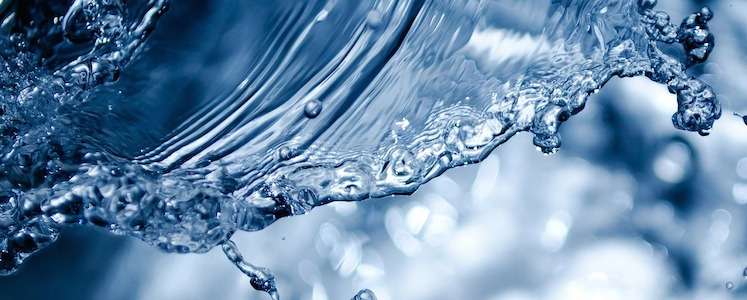Researchers propose conceptual device for solar-powered water sanitation

In a society raised with the luxury of clean water, it's easy to forget that potable drinking water isn't a given everywhere.
The issue of clean drinking water is pressing; the United Nations General Assembly officially recognized access to clean drinking water and sanitation as a human right in 2010, and yet a billion people currently lack access to clean drinking water. When water sanitation is available, it is often centralized at large, costly treatment facilities.
But imagine if you could scoop up a bucket of water in your backyard, stick it in the sun, and watch as the toxins and bacteria bubble away—it would be a global game-changer in the potable water crisis.
Carnegie Mellon University's Assistant Professor of Mechanical Engineering Venkat Viswanathan and a team of researchers have designed a conceptual device that, merely by absorbing sunlight, can sanitize dirty water. The device would, in essence, combine with unsanitary water and sunlight to create a potable water source.
"Theoretically," says Viswanathan, "you would dip a stick of this material in a bucket of water, take it outside, and it would absorb sunlight. What we are doing, essentially, is using the energy of the sun to excite or oxidize water into a compound that has the potency to clean."
The proposed material Viswanathan speaks of is simple: a rod of some material, ideally tin oxide or titanium dioxide, which would absorb sunlight to allow the water to oxidize, generating hydrogen peroxide.
"People have been trying for a very long time to make a material that can mimic the leaf, which takes carbon dioxide and water and converts them into fuel," says Viswanathan. "A leaf would convert them into cellulose and glucose. To mimic that process, what you need is something that can convert water into oxygen. The reason that tin oxide and titanium dioxide are very good candidates for our proposed device is that they are terrible at converting water into oxygen; they're among the worst materials that can catalyze oxidizing water to oxygen, and it's actually for the exact same reason they're terrible for that process that they're good for this process."
Tin oxide and titanium dioxide are very stable compounds. In other words, they don't like to bond; hardly any chemicals stick to them. That property of binding so weakly to other compounds causes the formation of hydrogen peroxide. Using energy from the solar photons, tin oxide and titanium oxide oxidize the water molecule (H2O) to hydrogen peroxide (H2O2).
Then, once the hydrogen peroxide has eliminated all of the water's bacteria and organic pollutants, the device would self-shut down—when it runs out of things to clean, hydrogen peroxide is unstable in water.
"And once the catalytic reaction has finished," Viswanathan explains, "you would take the stick out and expose the water to sunlight for a little bit longer. If the water heats up even just a little bit, the hydrogen peroxide will decompose and become water and oxygen again."
It's predicted that about 3 billion people won't have access to clean drinking water by 2020, Viswanathan says, but he is hopeful that his team's device, when it is eventually prototyped and released, will bring that number down.
"Water is going to be the big challenge of the coming century, and so addressing challenges with respect to water is quite important," says Viswanathan. "What I hope this device will do is to give us a decentralized water treatment solution. This device, if it works the way we imagine it, will really enable access to clean drinking water for the billion people that don't currently have access to it."
The device was proposed by Viswanathan and co-authors Heine A. Hansen and Jens K. Nørskov, researchers in Stanford University's SUNCAT Center for Interface Science and Catalysis.
More information: Read the full article: "Selective electrochemical generation of hydrogen peroxide from water oxidation" by V. Viswanathan, H.A. Hansen, and J.K. Nørskov, The Journal of Physical Chemistry Letters 2015 6 (21), 4224-4228.
Journal information: Journal of Physical Chemistry Letters


















